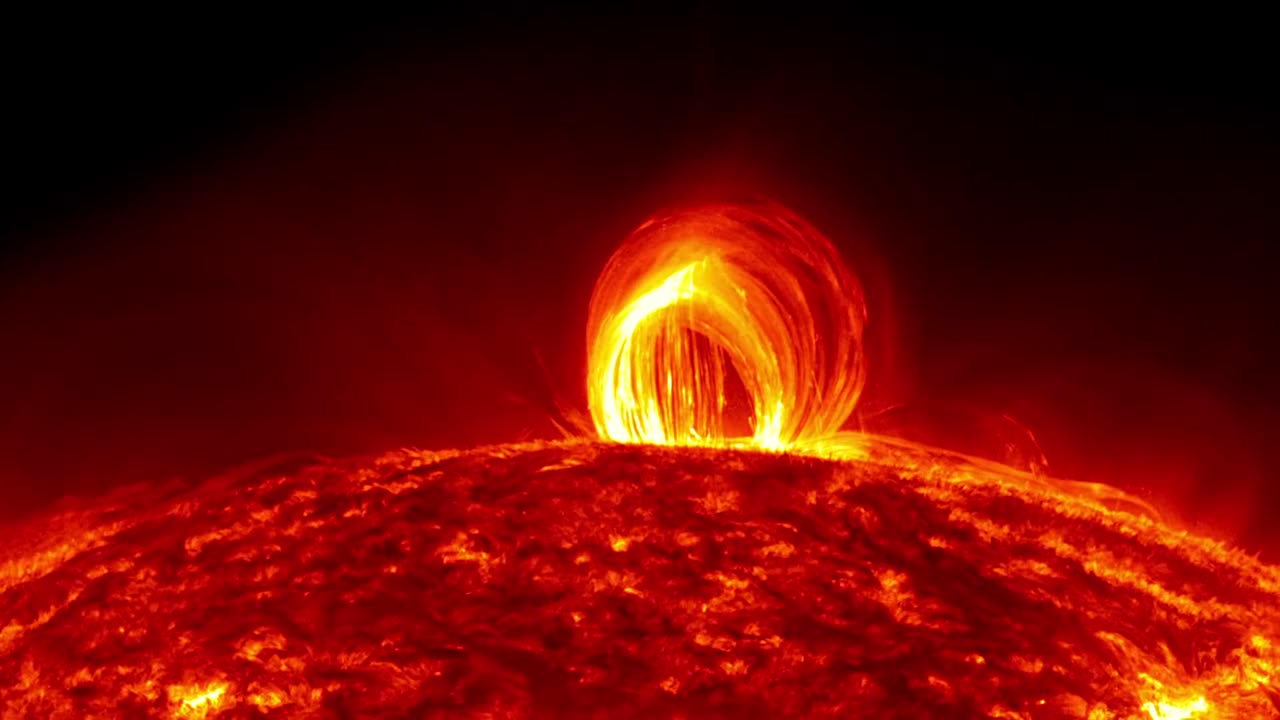Premium Only Content

NASA | Fiery Looping Rain on the Sun
Eruptive events on the sun can be wildly different. Some come just with a solar flare, some with an additional ejection of solar material called a coronal mass ejection (CME), and some with complex moving structures in association with changes in magnetic field lines that loop up into the sun's atmosphere, the corona.
On July 19, 2012, an eruption occurred on the sun that produced all three. A moderately powerful solar flare exploded on the sun's lower right hand limb, sending out light and radiation. Next came a CME, which shot off to the right out into space. And then, the sun treated viewers to one of its dazzling magnetic displays -- a phenomenon known as coronal rain.
Over the course of the next day, hot plasma in the corona cooled and condensed along strong magnetic fields in the region. Magnetic fields, themselves, are invisible, but the charged plasma is forced to move along the lines, showing up brightly in the extreme ultraviolet wavelength of 304 Angstroms, which highlights material at a temperature of about 50,000 Kelvin. This plasma acts as a tracer, helping scientists watch the dance of magnetic fields on the sun, outlining the fields as it slowly falls back to the solar surface.
The footage in this video was collected by the Solar Dynamics Observatory's AIA instrument. SDO collected one frame every 12 seconds, and the movie plays at 30 frames per second, so each second in this video corresponds to 6 minutes of real time. The video covers 12:30 a.m. EDT to 10:00 p.m. EDT on July 19, 2012.
Music: "Thunderbolt" by Lars Leonhard, courtesy of artist. http://www.lars-leonhard.de/
This video is public domain and can be downloaded at: http://svs.gsfc.nasa.gov/goto?11168
-
 16:07
16:07
SKAP ATTACK
11 hours ago $0.04 earnedNuggets STEAL Game 1 Behind Jokic Mastery
612 -
 22:16
22:16
marcushouse
13 hours ago $0.08 earnedFinally, the Starship Info We’ve Been Waiting For… And What We Can Do With It Is Wild!
2.4K10 -
 33:32
33:32
Ohio State Football and Recruiting at Buckeye Huddle
11 hours agoOhio State Football: What Position is the Biggest Question Mark for the Buckeyes?
2.36K1 -
 9:30
9:30
VSOGunChannel
16 hours ago $0.06 earnedAdmin Actually Defending the 2nd Amendment?
1.49K4 -
 44:55
44:55
BEK TV
10 hours agoTARIFFS, TECH TYRANNY, AND PROPHECY: CLAY CLARK EXPOSES THE GLOBAL RESET NO ONE IS TALKING ABOUT
1.55K -
 56:09
56:09
TheCommonSenseShow
5 days agoA NEW CONSERVIATIVE MEDIA WILL SOON BE THE LARGEST OUTLET IN THE WORLD
6.29K2 -
 57:50
57:50
Trumpet Daily
1 day ago $3.29 earnedThe Deadly Disease of Forgetting History - Trumpet Daily | Apr. 18, 2025
8.09K4 -
 23:12
23:12
The Bryce Eddy Show
2 days ago $0.06 earnedJames Jackson: Beyond the Battlefield
6.44K1 -
 52:53
52:53
The Escape Zone
3 days ago $0.02 earnedSurvival Security: Learning from the best with bestselling author and former CIA operative!
6.32K -
 15:10
15:10
The Lou Holtz Show
1 day agoLou Holtz: “America’s Lost Its Values—Time to Stand for Faith, Family & Common Sense! #americafirst
3.47K2